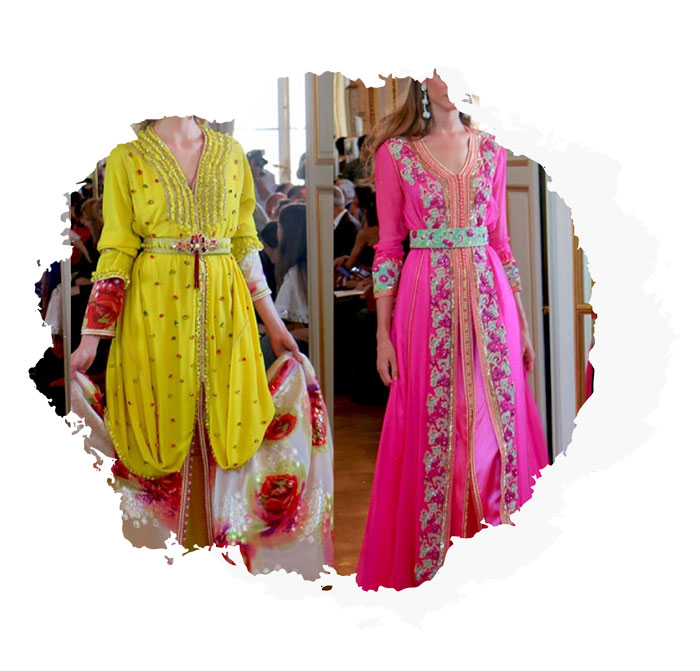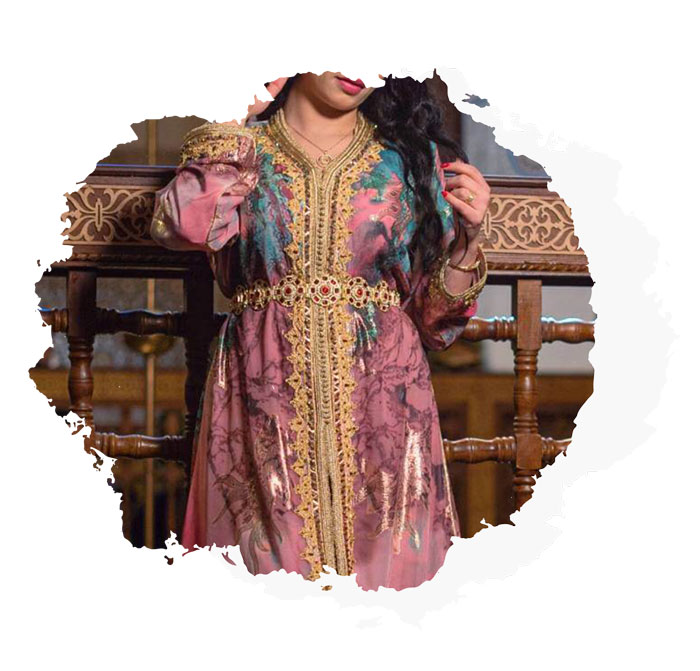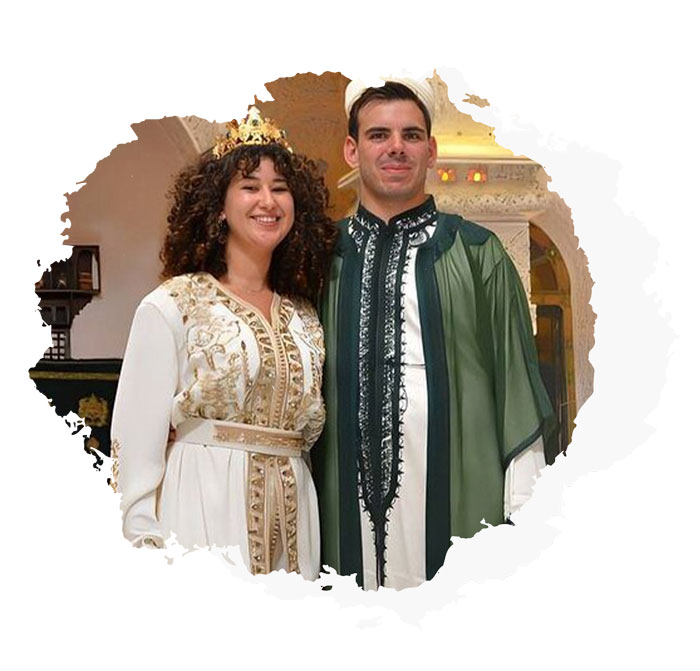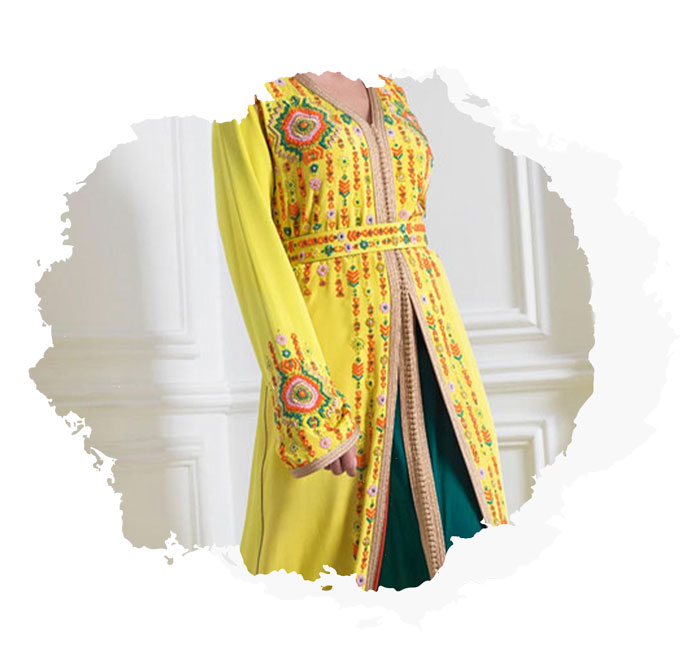Fes Caftans: A Blend of Moroccan and Andalusian Influences
Fes, the spiritual and cultural heart of Morocco, has long been renowned for its rich history of craftsmanship, particularly in the creation of caftans. These traditional garments, known for their luxurious fabrics, intricate embroidery, and unique style, represent a deep fusion of Moroccan heritage and Andalusian influences. This blend of cultures has shaped the distinctive caftan designs found in Fes, which continue to be an important symbol of Moroccan identity.
The Origins of the Caftan in Morocco
The caftan, a long, flowing robe, has its origins in the ancient Middle East, but it was brought to Morocco through the influence of various cultures over time, including the Romans, Arabs, and the Ottoman Empire. In the 8th and 9th centuries, Andalusian Muslims (from Spain) played a significant role in bringing their rich cultural traditions to Morocco, particularly in cities like Fes, which became a thriving center for arts, education, and trade.

The Andalusian Influence on Fes Caftans
The fusion of Moroccan and Andalusian styles began as a result of the Iberian Muslim presence in Morocco, especially in Fes, which was a hub for artisans and intellectuals during the Almohad and later dynasties. Andalusian influence can be seen in the elegant, flowing silhouette of the Fes caftan, which mimics the rich, embroidered styles that were popular in Spain during the Islamic Golden Age.

Key Andalusian Elements in Fes Caftans:
- Intricate Embroidery: The rich tradition of hand-embroidery that defines the Fes caftan was heavily influenced by Andalusian artistry. The use of metallic threads, often in gold or silver, to create detailed geometric patterns or floral designs was a hallmark of Andalusian textiles. This level of craftsmanship continues to be a key feature of Fes caftans, with skilled artisans spending hours, sometimes days, hand-stitching elaborate patterns.
- Luxurious Fabrics: The fabrics used in Fes caftans often feature velvet, brocade, silk, and brocaded cotton, which were popular among Andalusian elites. These fabrics not only offered a luxurious feel but were also ideal for showcasing the intricate embroidery. The colors of the fabrics, typically rich tones of red, gold, and green, reflect both Moroccan and Andalusian tastes, with bright and bold shades that stand out in ceremonies and festivities.
- Flowing Silhouettes: The flowing and elegant lines of the caftan, which extend from the shoulders down to the feet, are a key feature borrowed from Andalusian fashion. The long, loose-fitting cut was designed to offer comfort while maintaining an air of sophistication, with an emphasis on graceful movement. This element remains a signature aspect of Fes caftan designs today.
- Tassels and Embellishments: Another distinctive feature of the Fes caftan is the addition of decorative elements such as “qandil” (tassels), buttons (often made from metal or embroidered fabric), and “gargour” (a traditional fastening system). These embellishments add an additional layer of opulence to the garment, blending Moroccan influences with those of Andalusia.
Experience the Soul of Morocco – Book Your Cultural Journey Today
Moroccan Elements in Fes Caftans
While Andalusian influences have certainly shaped the Fes caftan, Moroccan traditions are just as important in creating the unique identity of this garment.
The Use of Traditional Moroccan Colors:
Fes caftans often incorporate colors deeply rooted in Moroccan culture, including red, blue, green, and yellow. Red, in particular, has strong associations with royal power, strength, and status in Moroccan culture. Green symbolizes fertility and spirituality, while blue evokes the vibrant hues of Moroccan cities like Chefchaouen, which is known for its blue-painted walls.
Berber Motifs and Symbols:
Moroccan artisans often integrate Berber symbols and motifs, such as geometric patterns and representations of nature, into the embroidery of Fes caftans. These symbols, passed down through generations, are part of the ancient craft traditions of the indigenous Berber people and have spiritual and cultural significance.
Moroccan Textiles and Weaving:
In addition to embroidery, Moroccan textiles play a crucial role in the making of caftans. Fabrics such as “khmissa” (woven wool) and “jellaba” (cotton) are also commonly used in Fes caftan designs. These textiles have been produced in Morocco for centuries and contribute to the region’s rich legacy of textile craftsmanship.
The Caftan’s Role in Moroccan Society
Fes caftans are more than just garments—they are steeped in cultural meaning. The caftan is often worn during significant life events, including weddings, religious festivals, and important family gatherings, making it an enduring symbol of Moroccan heritage and identity. The caftan represents a blending of cultures, where the rich history of Andalusia and Morocco converge, highlighting the beauty of cultural exchange.

Caftan and Moroccan Weddings:
The caftan is an essential part of Moroccan weddings, where both the bride and groom wear elaborately designed caftans. Traditionally, a bride might wear multiple caftans during the course of the celebration, each one more intricate and beautiful than the last, as a display of her family’s wealth and prestige. The colors, embroidery, and fabric choice all reflect the family’s social status.
Caftans in Religious and Cultural Festivals:
During Eid al-Fitr, Eid al-Adha, and other religious celebrations, wearing a beautifully crafted caftan is a tradition. These garments serve as a reminder of Morocco’s deep-rooted culture of craftsmanship and artistic expression.
The Revival of Fes Caftans in Modern Fashion
Today, Fes Caftans continue to inspire contemporary designers both within Morocco and internationally. Many fashion designers draw upon the traditional designs and techniques of Fes to create modern caftans that combine the elegance of the past with the styles of the present. The caftan’s versatility makes it perfect for both traditional and modern settings, with a growing number of people wearing them for special occasions and even as everyday attire.

Conclusion
The Fes caftan stands as a testament to the harmonious blend of Moroccan and Andalusian cultures. Its intricate designs, luxurious fabrics, and rich history showcase the artistry that has been passed down through generations. Today, the caftan continues to be a symbol of cultural pride, representing the enduring legacy of Fes as a center of craftsmanship and fashion. Whether worn for weddings, religious festivals, or simply as a statement of personal style, the Fes caftan remains a powerful reminder of Morocco’s rich cultural heritage and the beauty of cultural fusion.
